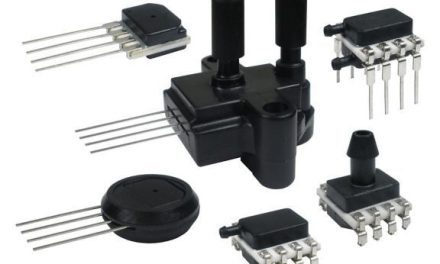 Nowadays sensing technology in the home security is relatively straightforward: a bunch of motion sensors, sometimes a basic camera, and a keypad to set and disarm the alarm system. But with giant tech firms showing increasing interest in implementing smart homes in the recent years, and the increasing presence of connected devices invading our domestic space, there’s been a lot of talk and excitement about Internet of Things solutions. And it’s the fundamental human need to feel safe that is driving the break-neck speed of IoT adoption with several brands battling it out to gain hearts and minds by securing our homes. There is no doubt that home security is going towards a drastic change.
Nowadays sensing technology in the home security is relatively straightforward: a bunch of motion sensors, sometimes a basic camera, and a keypad to set and disarm the alarm system. But with giant tech firms showing increasing interest in implementing smart homes in the recent years, and the increasing presence of connected devices invading our domestic space, there’s been a lot of talk and excitement about Internet of Things solutions. And it’s the fundamental human need to feel safe that is driving the break-neck speed of IoT adoption with several brands battling it out to gain hearts and minds by securing our homes. There is no doubt that home security is going towards a drastic change.
The advancement of detection technology has come thick and fast with an ever-increasing number of smart security devices entering the market, all offering access to (only) see what’s happening in the house. The UK start-up Cocoon is the latest in home security systems, leading in the evolving sensor tech with its patented SUBSOUND technology, that ‘listens’ for intruders even through closed doors.
Typical home security, with its 1980’s technology and sensors has led to a false alarms becoming part of suburban soundtrack, forcing people to either radically change their normal behaviour or to simply stop turning it on. Home security is broken, it has become ineffective and inaccessible for most people. Cocoon’s mission is to make millions of homes safer by putting people back at the centre of the home security experience.
The size of a tennis ball, but packed with powerful sensors, one Cocoon unit can protect a whole home thanks to a sophisticated combination of machine learning and infrasound – sound below 20Hz, which is undetectable to the human ear.
The study of low frequency sounds (below 20Hz) outside the range of human hearing, or ‘infrasonics’ has long been used by seismologists for earthquake detection and geologists to study rock formations deep within the earth. The same technology used to detect shock waves travelling through the planet can now be used to detect movement throughout the home.
The SUBSOUND technology can in fact detect intruders anywhere in the home, without the need for additional sensors. If picturing a house as being underwater, a door opening or closing upstairs or a person moving around will make the water move in various ways around the house. The same effect happens with the air in your house. An appropriate sensor can detect the air pressure changes or ‘ripples’ which correspond to activity in the home.
Cocoon uses a powerful microphone to detect infrasound and high quality sensor to convert these ripples into digital signals. It takes ambient sounds and notes their custom audio signature, turning the raw stream of acoustic data into a more comprehensible stream of events. These unique sound ‘fingerprints’ are then analysed allowing Cocoon to differentiate between footsteps when the user isn’t at home or loud music from next-door. Activity in adjacent buildings can cause “background noise” in the infrasound frequencies, but without a direct airflow between the properties, there are measurable differences in the sensor readings, which Cocoon can use to distinguish the two.
With this model, the combination of sound wave detection (audible, and infrasound), digital profiling and machine learning, augmented by information from the mobile app about when the user is at home or away, Cocoon can decide if a sensor event is likely to be significant. Cocoon’s advanced machine learning algorithms enable the device to adapt to changes in normal behaviour over time, understanding the home routine and identifying unusual events, then sending notifications to the user’s smartphone so they can take action.
The device never needs to be ‘set’ like a traditional system – simply entering and exiting the home will inform the system. Cocoon automatically detects when the authorised occupants are there and when they have left using geo-fencing on smartphones so there is no need to arm or disarm it. Similarly, when the users go to bed, Cocoon recognises their routine and activates accordingly. The mobile app lets the user check the home any time, streaming HD video and audio straight to the smartphone.
In addition to its infrasonic sound sensor, this Wi-Fi-enabled device includes an HD camera with night vision, motion sensor, microphone, speaker and a siren that can optionally be emitted.
Cocoon was co-founded by five British serial entrepreneurs with extensive start-up experience and a number of successful exits behind them. The Leeds-based team has recently been funded by Breed Reply, a London-based incubator that supports start-ups operating in the Internet of Things space, who selected Cocoon for the strength of its team and the ability to identify a market opportunity, transforming their idea into a product in just one year.
By Colin Richardson, co-founder and marketing manager of Cocoon


